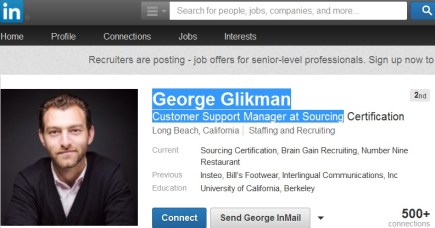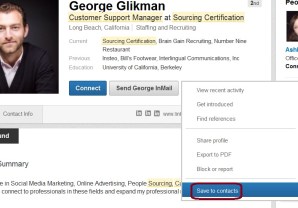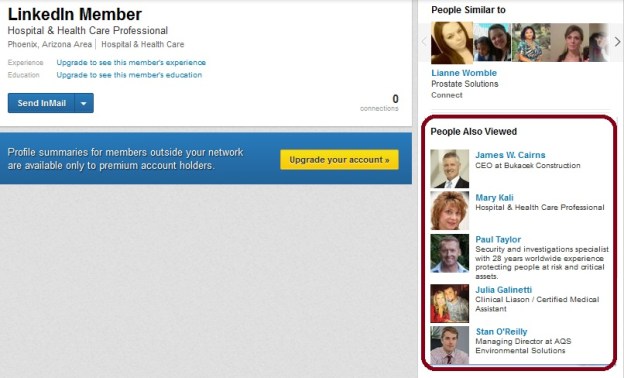
In the previous post Discrepancies in Search: LinkedIn Recruiter vs. Personal we looked at some differences in the search results. While we have no word from @LinkedIn, my guess is that the Basic search does additional “lightly semantic” interpretation of the search queries, which leads to those differences.
(1) THE REASON BEING THE INDUSTRY
In the first example with “computer games”, it matters that it’s the exact name of an industry. LinkedIn personal account adds the profiles that have that industry to the search results. That’s a guess backed up by a good number of tests. I find this “light semantic” addition to be quite relevant. As an example, let’s narrow the example search to current company = Apple. People who work at Apple do not necessarily work with computer games; those who do may express that as their industry. If we look for people at Apple with C++ 3D iOS “computer games”, the personal account finds 8 profiles, while LIR finds only 3.
Thanks to Glen Cathey for his comments on my last post and his new blog post with some exploration of what’s going on. (Glen: I just tried to see what the difference might be between a word used in the industry name and as a keyword otherwise – and ran across a search that I don’t even know how to begin to explain! A search for software NOT games/industry: “computer games” finds 28 people in the US – it will find more people in other countries! – and 4,623 results in LIR. Of course, that search itself doesn’t make much sense other than a test search.)
(2) THE REASON BEING OTHER THAN THE INDUSTRY
Responding to Glen’s request to provide examples of searches that do not include searches for industries: it is not hard to find, once you know that, generally, the personal/Basic search is “lightly semantic”.
EXAMPLE ONE. Search for VP Recruiting, Bank of America: personal – 22 results, LIR… 6 results. Guess what, personal account knows that VP is Vice President, LIR doesn’t! Here’s a variation: “VP Recruiting”, current or past, BofA: personal: 9 results. LIR: 2 results.
EXAMPLE TWO. Search for Sr. Manager at Deloitte in the US; personal: 60 results. LIR: 3 results. Personal knows that Sr means Senior; LIR doesn’t.
EXAMPLE THREE. Search for Morgan, Senior Project Manager, NYC Area 9 results, while LIR provides a whooping 358 results. I didn’t find the time for a better example and wanted to point what is going on: the personal decides to use Morgan as the first or the last name only, while LIR finds past and present employees of Morgan Stanley and J.P. Morgan. In this case (the personal names interpretation), I’d rather the semantic interpretation didn’t happen.
There are other examples of discrepancies I have run into, that I still can’t explain.
Needless to say, LinkedIn Recruiter subscribers don’t expect the differences in the search results to be so significant, in some cases seeing way fewer results in LIR, in other cases seeing many more results, yet in some – roughly the same numbers (as it used to be before Galene). That provides for poor UX, to say the least.
Once again, I seriously recommend searching “on both sides” and perhaps X-ray as well.
- Follow me on Twitter @Braingain
- Let’s connect – https://www.linkedin.com/in/irinashamaeva



























